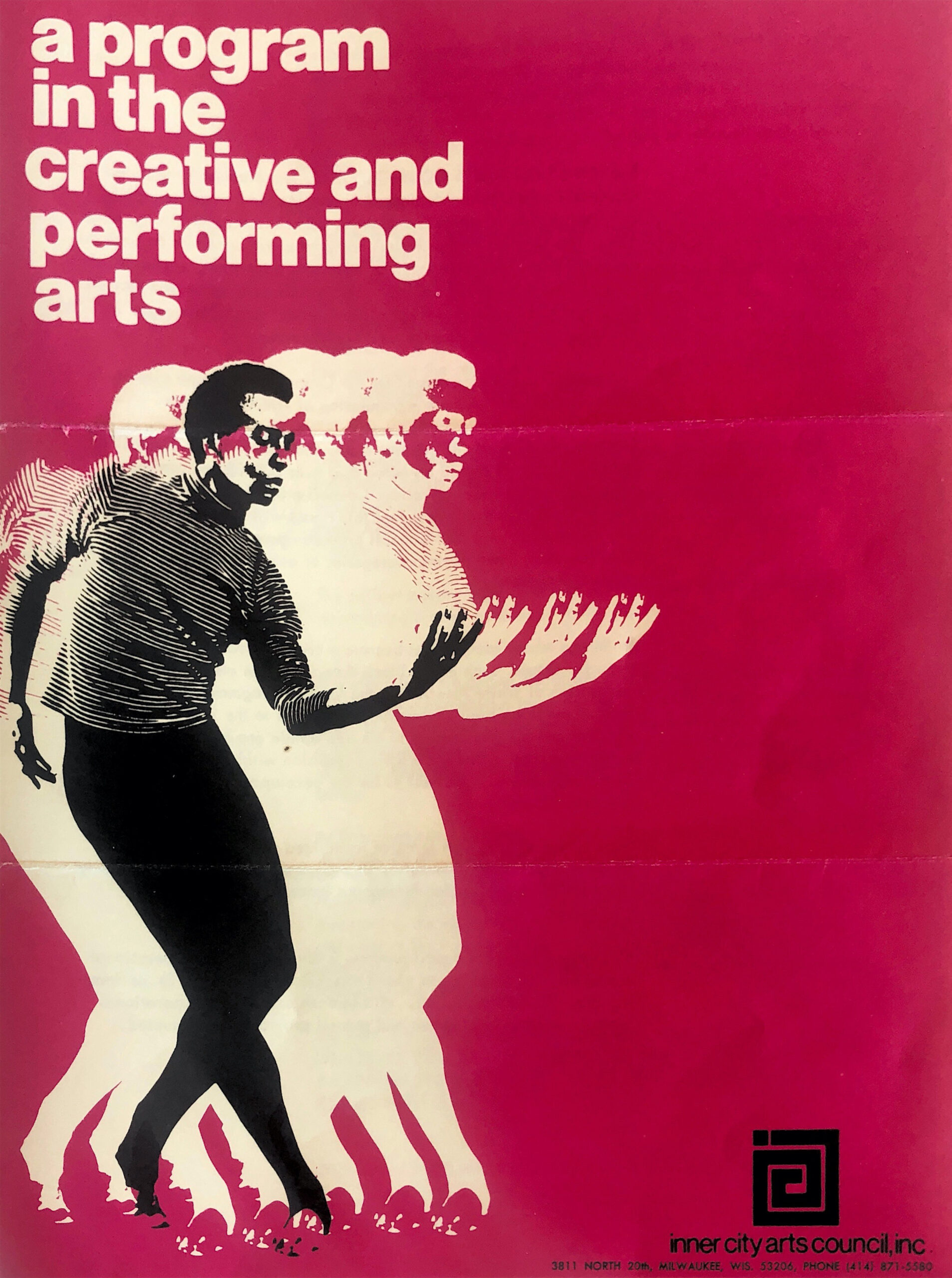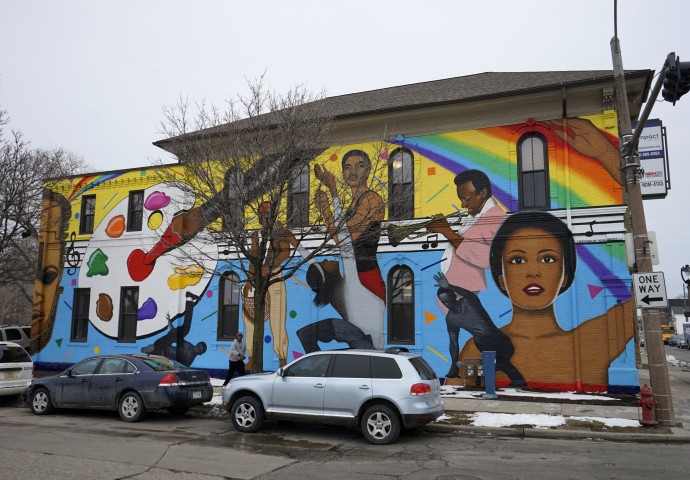The mural stands tall. A guardian of Interstate-43. Mountainous. A keeper of insurmountable dreams. Promises muttered in its cream brick as it cascades rainbow hues, b-boy grooves, and melanin splendor. I still marvel at its glory.
When I would ride shotgun in my grandfather’s Buick as a precocious kid, often I asked myself, “Who are these people painted on the side of this building? And what was happening there?”
Later in life, insatiable curiosity led me to discover that the glorious mural that captivated me as a child was a creation of the Inner City Arts Council. Anchored in the historic Bronzeville Milwaukee neighborhood, the organization was a cultural hub for artists of various mediums to develop their crafts while serving the predominately Black population in the area and beyond.

In the late 1960s, Milwaukee was thrust into the national spotlight. The blatant discriminatory practices of atrocious housing conditions and police brutality against Black residents led to an uprising in July 1967 which served as the precursor to the 200 Nights of Freedom marches. Ultimately, this call to action resulted in the passing of the Fair Housing Act of 1968.
This era unveiled a new consciousness for Black Americans who sought respite from the daily injustices of social life. This temperament echoed throughout the country with the cultural expressions of the Black Arts Movement.
The need for self-affirmation and self-actualization for Black Milwaukeeans lead to a number of organizations joining forces to create the entity known as the Inner City Arts Council in January 1968. Its charter members included The Mary Church Terrell-Creative Center, Black Arts Theatre, The Echo Writers Workshop, The Paint Box, and the Community Youth Center.
Artists are keepers of history. Creating new worlds as they uphold memories that whisper to the Earth. So, in learning more about the Inner City Arts Council, I knew I had to talk to a few elders who intimately experienced its magnitude.
Here are the stories of three artists, in their own words.
Reynaldo Hernandez – The Muralist
In 1984, Reynaldo Hernandez created the iconic mural entitled “Celebrate the Arts” on an office building that presently sits at the corner of 7th & North Avenue in Milwaukee. The site has a rich history, once serving as library and firestation, as well as the home of the Inner City Arts Council for many years.
Over the decades, Milwaukee has become a haven for many muralists to display their craft, but Hernandez’s work is part of the artistic landscape of my childhood. To this very day, it still is my favorite piece of public art in the city. During our interview, Hernandez details the striking images of the mural. It features the Mask of Benin, legendary jazz trumpeter Miles Davis, and a gorgeous Black woman rocking an afro.
Hernandez remembers the days when the Inner City Arts Council was the place to be for upcoming and established Black artists in the city. Its two floors consisted of dance and acting classes, alongside visual art studios for all ages. Like Hernandez, many other artists received their initial training & professional opportunities at the emblematic organization.
Mama Ferne Caulker – The Dancer
Mama Ferne Caulker was a young bright-eyed dancer who was eager to share and display her talents with the community. She remembers being amongst an eclectic mix of people performing at various events like summer festivals and teaching kids in city parks.
With so much danger for Black residents like Caulker, the Inner City Arts Council gave her and others the chance to envision worlds beyond their wildest imaginations. “We found a vehicle with which to mount hope,“ she said.
Ko-Thi Dance Company, founded by Caulker in 1969, became a staple within the Inner City Arts Council thanks to their riveting performances and educational outreach initiatives.
Sherri-Williams Pannell – The Ingenue
Sherri-Williams Pannell was a young girl who attended many performances that became staples within the Black community of Milwaukee. She was mesmerized by the Black theatrical productions that came to entertain her family. “I just sat there with my mouth hanging open,” she said.
One of those plays was “To Be Young, Gifted and Black” by Lorraine Hansberry. Parnell recalls how uplifting the work of the Inner City Arts Council was during her adolescent years into young womanhood as she went on to attend the prestigious Spelman College. Pannell would later obtain a degree in directing from the University of Wisconsin-Madison, following in the footsteps of Lorraine Hansberry, who also attended the state’s flagship institution.
– Mama Ferne Caulker“We found a vehicle with which to mount hope”

The Inner City Arts Council went on to host iconic artists like Eartha Kitt, Ben Vereen, & Alvin Ailey. Its impact positioned the organization as a forerunner until it later dissolved in the early 1990s, but those whispers are still within the city. Reynaldo Hernandez, Mama Ferne Caulker, Sherri-Williams Pannell, and so many others hold tales to a time where Black people sipped from its gourd. They are our elders. Our storytellers. Our libraries. It is my hope we continue to acknowledge the Inner City Arts Council and the artistic contributions of the people who were part of it, to inspire future generations in Milwaukee and beyond.
Inner City Arts Council archival images courtesy of Milwaukee County Historical Society. Reynaldo Hernandez photo by Sam Easton, Mama Ferne Caulker photo by Sara Stathas, Sheri Williams Pannell photo by Scott Paulus.
